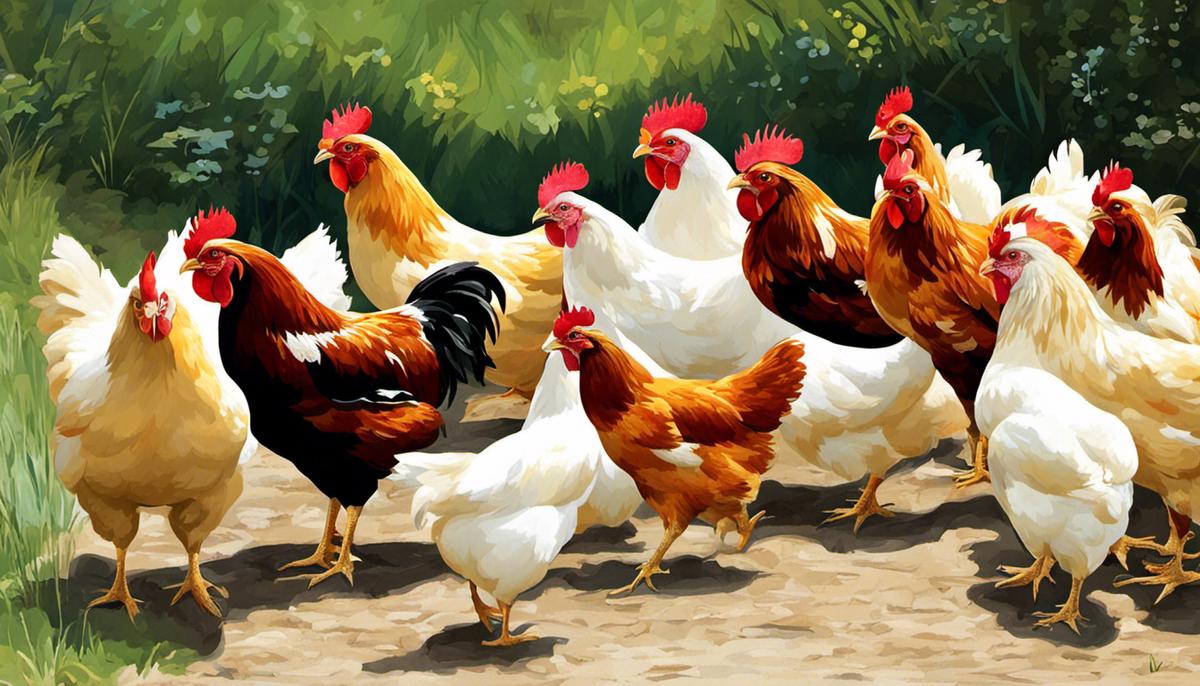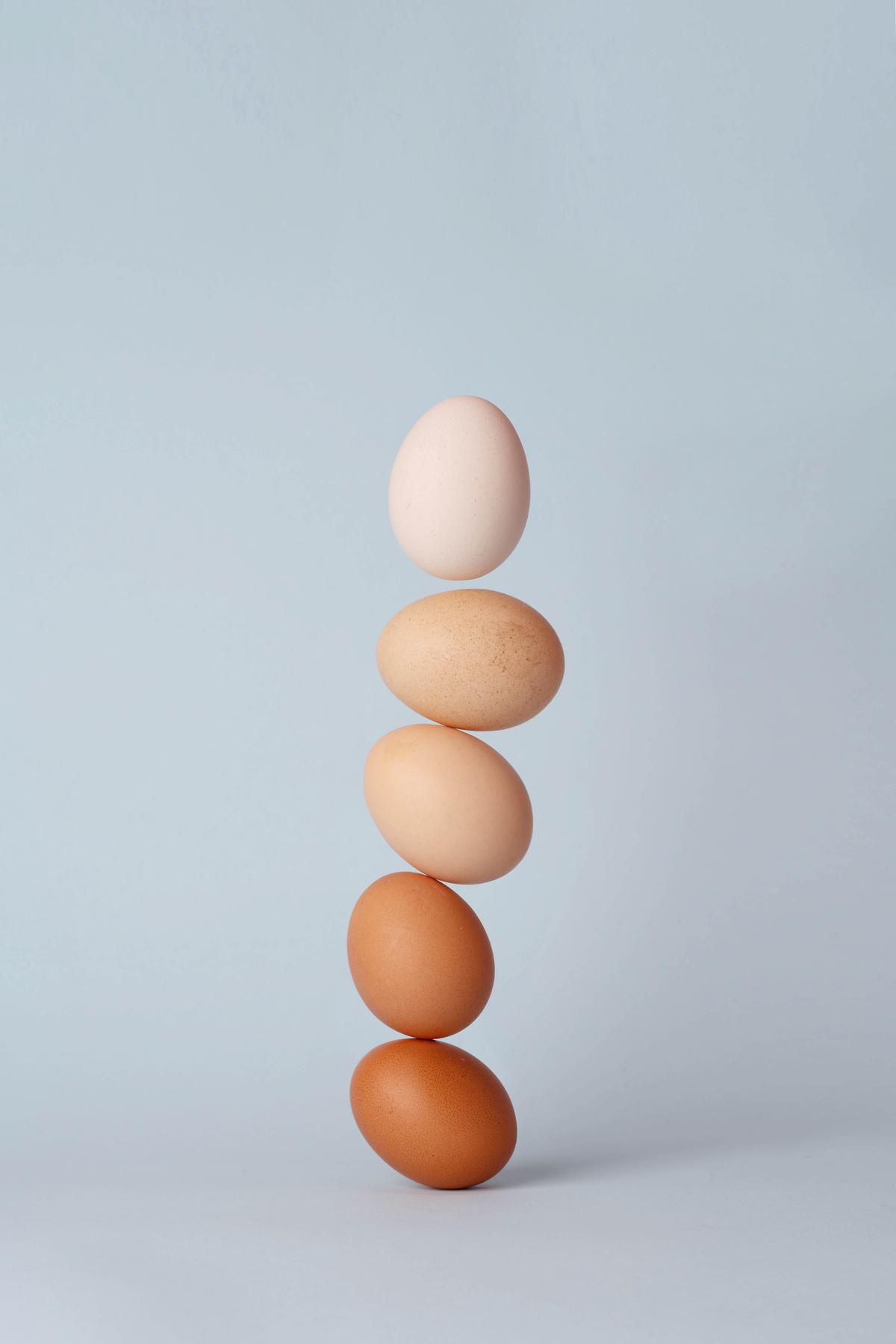Raising chickens can be an incredibly rewarding experience, providing not only companionship but a consistent supply of fresh eggs. However, Comprehending Chicken Egg Production can be difficult to understand, you might be asking when are my chickens going to start laying eggs and how many they’ll lay. This information aims to offer a grasp of the growth and development phases of a chicken, especially focusing on the egg-laying stage. Furthermore, it also delves into various chicken breeds and their specific laying patterns, as egg production can significantly vary amongst different strains. Lastly, learning the variety of factors that influence egg production, such as light exposure, climate, and diet, can help in maintaining the health of your chickens and maximizing their egg-laying potential.
We will receive a commission if you purchase through our affiliate link at no extra cost to you. Please read our disclosure policy for more information.
Understanding Chicken Growth and Development
Understanding Chicken Growth Phases
Like all animals, chickens have definitive life phases— egg, chick, pullet, and hen. Comprehending these stages is crucial to predict the potential laying period.
In the initial phase, a chicken’s life begins as an egg, which typically takes about 21 days to hatch. Post-hatching, the bird is called a chick, which lasts up to six weeks. During this phase, chicks develop primary feathers, enabling them to maintain their body temperature.
From six weeks until they’re about 20 weeks old, chickens are referred to as pullets – young female chickens. This stage is noticeable by the growth of their comb and wattle, which turn brighter as they mature. It is also when the chicken will reach its full size.
The Laying Phase: Anticipation and Significance
The laying phase usually starts when the chickens are around 20 to 24 weeks old; this is when the pullets transform into hens. However, field observations have noted there could be variations based on breeds. The lighter breeds might start laying eggs earlier, around 18-20 weeks, while the heavier ones might delay until 22-24 weeks; some extreme layer breeds might even delay up to 28 weeks.
It is noteworthy to mention that hens’ first few eggs, known as ‘pullet eggs’, are smaller in size compared to the ones they’ll lay in the future. Once a hen begins laying, she’ll continue to do so for several years, with production gradually declining after the first couple of years.
Determining Egg-Laying Frequency
The frequency of egg-laying varies among breeds and individual chickens but most hens will lay approximately five to seven eggs per week, within the first year. Factors such as the chicken’s health and nutrition, environment, and light exposure greatly influence this frequency.
It is also important to note that egg-laying is not constant throughout the year. Chickens usually slow down or halt their egg-laying during the cooler, wintery months with shorter daylight hours. So, if your hen isn’t laying as expected, consider seasonality before worrying about your hen’s health.
Understanding the growth phases of chickens and the variables influencing their egg-laying habits can aid in setting realistic expectations and catering to the chickens’ needs effectively.

Breed-Specific Laying Patterns
Understanding Chicken Breeds
Before you can predict the egg-laying patterns of your chickens, you must first identify what breeds you have. Chickens come in a variety of breeds ranging from the prolific layers like Rhode Island Reds and White Leghorns to heritage breeds like Plymouth Rocks and Orpingtons that lay fewer eggs. Therefore, understanding and identifying the exact breed of your chickens is critical in learning about their laying patterns.
Researching Chicken Breeds
Consider consulting reputable sources to research chicken breeds extensively. These sources could be books, articles, or websites dedicated to poultry farming or chickens. Besides, participate in farmer forums or community poultry groups. They offer a wealth of firsthand knowledge and experiences that are incredibly invaluable. You can also reach out to local chicken farmers or visit farming exhibitions for detailed insights on various chicken breeds. To learn more about chicken breeds, check out one of my other article Beginners Guide To Chicken Breeds.
Chicken Breeds and Egg Laying Patterns
Some breeds begin laying eggs at a young age. For instance, the White Leghorn starts laying as early as 16 weeks old. This breed usually lays white eggs, with a potential rate of 280-320 eggs per year. Conversely, heritage breeds like the Sussex and Plymouth Rock start laying at around 20-24 weeks. They typically lay brown eggs and can give you approximately 200-280 eggs per year.
Breeds like Wyandottes and Orpingtons aren’t the most proficient layers but lay large brown eggs. The egg-laying rate could range from 150-200 eggs per year. Lastly, there are breeds like the Silky Bantam that may only lay around 100 eggs per year.
Chicken Health and Egg Production
Remember that egg production isn’t only determined by the breed but also the health and well-being of the chicken. Irregular laying patterns could be due to stress, insufficient nutrition, inadequate lighting, extreme weather conditions, or underlying health concerns.
Record Keeping
After you’ve researched and understood your chickens’ breed and potential laying patterns, it’s essential to keep records. This could be a simple notebook log or a spreadsheet documenting the number of eggs laid each day. Record keeping not only helps you track the egg production but also monitor any irregularities or changes in the egg-laying patterns.
By thoroughly researching the different chicken breeds, understanding their respective egg-laying patterns, and keeping track of their egg production, you’ll learn how to manage and predict when your chickens will start laying eggs and how many you can expect.

Factors Influencing Egg Production
Understanding Egg Production in Chickens
Chickens generally begin to lay eggs between five to six months of age, but this is heavily depended upon the breed of chicken. The frequency and quantity of egg production can be influenced by numerous factors like light exposure, climate, diet, stress, as well as the health of the chicken. In order to improve egg production, these factors need to be closely monitored and optimized.
Impact of Light Exposure on Egg Production
Light exposure plays an essential role in egg production. A chicken’s reproductive system is sensitive to light exposure and an optimum of 14-16 hours of light per day is needed for maximum egg production. Make sure your hens are exposed to adequate light. Avoid sudden changes in the light regime as it can stress your chickens and disrupt their laying pattern. During the winter months you can use an automatic LED daylight extender to boosts chicken Egg production. AutoCoop LayLight
Effect of Climate on Egg Laying Frequency
Chickens are comfortable laying eggs under certain temperature ranges. Extreme heat or cold can stress out your chickens, leading to decreased egg production. Make sure they have a place to take shelter from extreme weather conditions.
Role of Diet in Chicken’s Egg Production
A chicken’s diet has a significant influence on the quantity and quality of eggs produced. Providing a balanced diet that includes appropriate quantities of protein, carbohydrates, vitamins, and minerals is crucial. If egg production slows down, check your chicken’s feed. Providing layers pellets enriched with essential nutrients can help enhance egg production. Be sure your hens are getting all the supplements they need. Manna Pro Omega Egg Maker – is a Chicken Feed Supplement for Laying Hens-Poultry Food with Omega-3 Fatty Acids – Digestion Support with Fortified Vitamins & Minerals.
Stress Management for Better Egg Production
Stressors including loud noises, changes in the flock, predators, or illnesses can significantly affect egg production. A stressed chicken often lays fewer eggs. Offer a secure, calm environment to reduce stress and promote frequent egg laying.
Importance of Chicken’s Health in Egg Production
The overall health of the chicken is perhaps the most important factor. Sick chickens don’t lay eggs. Regular health check-ups are necessary to ensure your chickens are free from diseases. A healthy chicken is a productive chicken.
Actions to Improve Egg Production
To improve egg production, provide your chickens with a balanced diet, ensure they live in a stress-free environment with a steady light-dark regime, have protection from extreme weather, and receive regular health checks. Regularly monitor these factors and make necessary adjustments if needed. A strategic approach can lead to a noticeable improvement in egg productivity.

Photo by jiangxulei1990 on Unsplash
Knowing when and how often your chickens will lay eggs not only contributes to successful chicken keeping but also adds to the joy of owning these beautiful birds. A thorough understanding of various factors, including breeds, their growth and development, and external influences, can positively impact egg production. The knowledge of breed-specific laying patterns and how external factors like light exposure and diet influence egg laying can be a game changer. Remember, managing these insights about your chickens requires patience, observation, and a willingness to learn, ensuring that you have happy, healthy chickens that reward you with fresh eggs.
Want to learn more, check out some of my other articles. Your Ultimate Guide To Raising Chickens Successfully.






